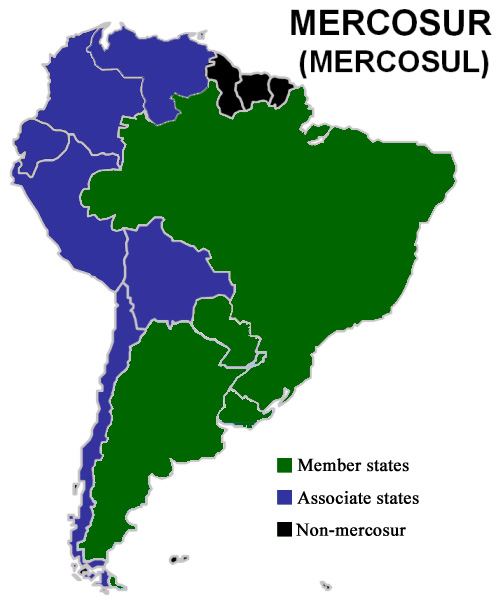 The EU has recently signed two trade deals after many years of negotiations. The first is with Mercosur, the South American trading and economic co-operation organisation, currently consisting of Brazil, Argentina, Uruguay and Paraguay – a region of over 260m people. The second is with Vietnam, which should result in tariff reductions of 99% of traded goods. This is the first deal of its kind with a developing country in Asia. These deals follow a recent landmark deal with Japan.
The EU has recently signed two trade deals after many years of negotiations. The first is with Mercosur, the South American trading and economic co-operation organisation, currently consisting of Brazil, Argentina, Uruguay and Paraguay – a region of over 260m people. The second is with Vietnam, which should result in tariff reductions of 99% of traded goods. This is the first deal of its kind with a developing country in Asia. These deals follow a recent landmark deal with Japan.
At a time when protectionism is on the rise, with the USA involved in trade disputes with a number of countries, such as China and the EU, deals to cut tariffs and other trade restrictions are seen as a positive development by those arguing that freer trade results in a net gain to the participants. The law of comparative advantage suggests that trade allows countries to consume beyond their production possibility curves. What is more, the competition experienced through increased trade can lead to greater efficiency and product development.
It is estimated that the deal with Mercosur could result in a saving of some €4bn per annum in tariffs on EU exports.
 But although there is a net economic gain from greater trade, some sectors will lose as consumers switch to cheaper imports. Thus the agricultural sector in many parts of the EU is worried about cheaper food imports from South America. What is more, increased trade could have detrimental environmental impacts. For example, greater imports of beef from Brazil into the EU could result in more Amazonian forest being cut down to graze cattle.
But although there is a net economic gain from greater trade, some sectors will lose as consumers switch to cheaper imports. Thus the agricultural sector in many parts of the EU is worried about cheaper food imports from South America. What is more, increased trade could have detrimental environmental impacts. For example, greater imports of beef from Brazil into the EU could result in more Amazonian forest being cut down to graze cattle.
But provided environmental externalities are internalised within trade deals and provided economies are given time to adjust to changing demand patterns, such large-scale trade deals can be of significant benefit to the participants. In the case of the EU–Mercosur agreement, according to the EU Reporter article, it:
…upholds the highest standards of food safety and consumer protection, as well as the precautionary principle for food safety and environmental rules and contains specific commitments on labour rights and environmental protection, including the implementation of the Paris climate agreement and related enforcement rules.
The size of the EU market and its economic power puts it in a strong position to get the best trade deals for its member states. As EU Trade Commissioner, Cecilia Malmström stated:
Over the past few years the EU has consolidated its position as the global leader in open and sustainable trade. Agreements with 15 countries have entered into force since 2014, notably with Canada and Japan. This agreement adds four more countries to our impressive roster of trade allies.
Outside the EU, the UK will have less power to negotiate similar deals.
Articles
Questions
- Draw a diagram to illustrate the gains for a previously closed economy from engaging in trade by specialising in products in which it has a comparative advantage.
- Distinguish between trade creation and trade diversion from a trade deal with another country or group of countries.
- Which sectors in the EU and which sectors in the Mercosur countries and Vietnam are likely to benefit the most from the respective trade deals?
- Which sectors in the EU and which sectors in the Mercosur countries and Vietnam are likely to lose from the respective trade deals?
- Are the EU–Mercosur and the EU–Vietnam trade deals likely to lead to net trade creation or net trade diversion?
- What are the potential environmental dangers from a trade deal between the EU and Mercosur? To what extent have these dangers been addressed in the recent draft agreement?
- Will the UK benefit from the EU’s trade deals with Mercosur and Vietnam?
 In 2015, at the COP21 climate change conference in Paris, an agreement was reached between the 195 countries present. The Paris agreement committed countries to limiting global warming to ‘well below’ 2°C and preferably to no more than 1.5°C. above pre-industrial levels. To do this, a ‘cap-and-trade’ system would be adopted, with countries agreeing to limits to their emissions and then being able to buy emissions credits to exceed these limits from countries which had managed to emit below their limits. However, to implement the agreement, countries would need to adopt a ‘rulebook’ about how the permitted limits would be applied, how governments would measure and report emissions cuts, how the figures would be verified and just how a cap-and-trade system would work.
In 2015, at the COP21 climate change conference in Paris, an agreement was reached between the 195 countries present. The Paris agreement committed countries to limiting global warming to ‘well below’ 2°C and preferably to no more than 1.5°C. above pre-industrial levels. To do this, a ‘cap-and-trade’ system would be adopted, with countries agreeing to limits to their emissions and then being able to buy emissions credits to exceed these limits from countries which had managed to emit below their limits. However, to implement the agreement, countries would need to adopt a ‘rulebook’ about how the permitted limits would be applied, how governments would measure and report emissions cuts, how the figures would be verified and just how a cap-and-trade system would work.
At the COP24 meeting from 2 to 15 December 2018 in Katowice, Poland, nearly 14 000 delegates from 196 countries discussed the details of a rulebook. Despite some 2800 points of contention and some difficult and heated negotiations, agreement was finally reached. Rules for targeting, measuring and verifying emissions have been accepted. If countries exceed their limits, they must explain why and also how they will meet them in future. Rich countries agreed to provide help to poor countries in curbing their emissions and adapting to rising sea levels, droughts, floods and other climate-induced problems.
 But no details have been agreed on the system of carbon trading, thanks to objections from the Brazilian delegates, who felt that insufficient account would be made of their country’s existing promises on not chopping down parts of the Amazon rainforest.
But no details have been agreed on the system of carbon trading, thanks to objections from the Brazilian delegates, who felt that insufficient account would be made of their country’s existing promises on not chopping down parts of the Amazon rainforest.
Most seriously, the measures already agreed which would be covered by the rulebook will be insufficient to meet the 2°C, let alone the 1.5°C, target. The majority of the measures are voluntary ‘nationally determined contributions’, which countries are required to submit under the Paris agreement. These, so far, would probably be sufficient to limit global warming to only around 3°C, at which level there would be massive environmental, economic and social consequences.
There was, however, a belief among delegates that further strong international action was required. Indeed, under the Paris agreement, emissions limits to keep global warming to the ‘well below 2°C’ level must be agreed by 2020.
Climate change is a case of severe market failure. A large proportion of the external costs of pollution are borne outside the countries where the emitters are based. This creates a disincentive for countries acting alone to internalise all these externalities through the tax system or charges, or to regulate them toughly. Only by countries taking an international perspective and by acting collectively can the externalities be seen as a fully internal problem.
Even though most governments recognise the nature and scale of the problem, one of the biggest problems they face is in persuading people that it is in their interests to cut carbon emissions – something that may become increasingly difficult with the rise in populism and the realisation that higher fuel and other prices will make people poorer in the short term.
Articles
Questions
- To what extent can the atmosphere been seen as a ‘global commons’?
- What incentives might be given for business to make ‘green investments’?
- To what extent might changes in technology help businesses and consumers to ‘go green’?
- Why might international negotiations over tackling climate change result in a prisoner’s dilemma problem? What steps could be taken to tackle the problem?
- How would an emissions cap-and-trade system work?
- Investigate the Brazilian objections to the proposals for emissions credits. Were the delegates justified in their objections?
- What types of initiative could businesses take to tackle ‘supply chain emissions’?
- How could countries, such as the USA, be persuaded to reduce their reliance on coal – an industry lauded by President Trump?
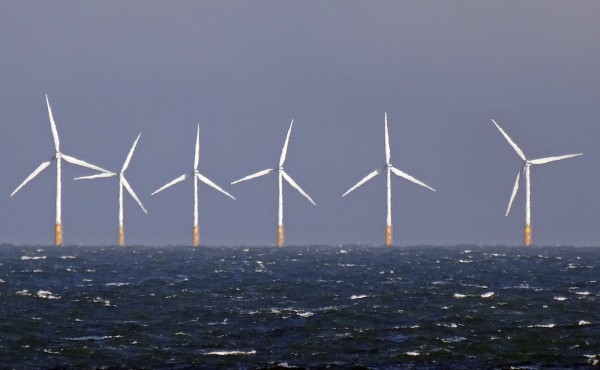 After two weeks of negotiations between the 195 countries attending the COP21 climate change conference in Paris, a deal has been reached on tackling climate change. Although the deal still has to be ratified by countries, this is a major step forward in limiting global warming. Before it can formally come into force, it must have been ratified by at least 55 countries, accounting for at least 55% of global greenhouse gas emissions.
After two weeks of negotiations between the 195 countries attending the COP21 climate change conference in Paris, a deal has been reached on tackling climate change. Although the deal still has to be ratified by countries, this is a major step forward in limiting global warming. Before it can formally come into force, it must have been ratified by at least 55 countries, accounting for at least 55% of global greenhouse gas emissions.
The deal goes much further than previous agreements and includes the following:
- A limit on the increase in global temperatures to ‘well below’ 2°C above pre-industrial levels and efforts pursued to limit it to 1.5°C.
- A recognition that the pledges already made ahead of the conference by 186 countries and incorporated into the agreement are insufficient and will only limit global temperature rise to 2.7°C at best.
- Countries to update their emissions reductions commitments every five years – the first being in 2020. Such revised commitments should then be legally binding.
- A global ‘stocktake’ in 2023, and every five years thereafter, to monitor countries’ progress in meeting their commitments and to encourage them to make deeper cuts in emissions to reach the 1.5°C goal. This requires a process of measurement and verification of countries’ emissions.
- To reach a peak in greenhouse gas emissions as soon as possible and then to begin reducing them and to achieve a balance between sources and sinks of greenhouse gases (i.e. zero net emissions) in the second half of this century.
- Developed countries to provide the poorest developing countries with $100bn per year by 2020 to help them reduce emissions. This was agreed in Copenhagen, but will now be continued from 2020 to 2025, and by 2025 a new goal above $100bn per year will be agreed.
- The development of market mechanisms that would award tradable credits for green projects and emissions reductions.
- A recognition that the ‘loss and damage’ associated with climate-related disasters can be serious for many vulnerable developing countries (such as low-lying island states) and that this may require compensation. However, there is no legal liability on developed countries to provide such compensation.
Perhaps the major achievement at the conference was a universal recognition that the problem of global warming is serious and that action needs to be taken. Mutual self interest was the driving force in reaching the agreement, and although it is less binding on countries than many would have liked, it does mark a significant step forward in tackling climate change.
But why did the conference not go further? Why, if there was general agreement that global warming should be tackled and that global temperature rise should ideally be capped at 1.5°C, was there not a binding agreement on each country to apply this cap?
There are two reasons.
First, it is very difficult to predict the exact relationship, including its timing, between emissions and global temperature rise. Even if you could make limits to emissions binding, you could not make global temperature rise binding.
 Second, even if there is general agreement about how much emissions should be reduced, there is no general agreement on the distribution of these reductions. Many countries want to do less themselves and others to do more. More specifically, poor countries want rich countries to do all the cutting while many continue to build more coal-fired power stations to provide the electricity to power economic development. The rich countries want the developing countries, especially the larger ones, such as China, India and Brazil to reduce their emissions, or at least the growth in their emissions.
Second, even if there is general agreement about how much emissions should be reduced, there is no general agreement on the distribution of these reductions. Many countries want to do less themselves and others to do more. More specifically, poor countries want rich countries to do all the cutting while many continue to build more coal-fired power stations to provide the electricity to power economic development. The rich countries want the developing countries, especially the larger ones, such as China, India and Brazil to reduce their emissions, or at least the growth in their emissions.
Then there is the difference between what countries vaguely pledge at a global conference and what they actually do domestically. Many developed countries are keen to take advantage of currently cheap fossil fuels to power economic growth. They are also still investing in alternative sources of fossil fuels, such as through fracking.
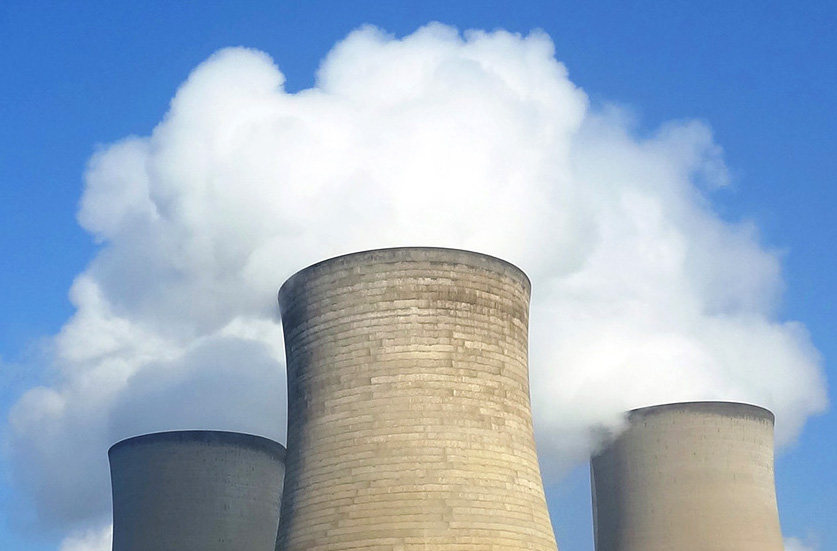 As we said in the previous blog, game theory can shed some useful insights into the nature and outcome of climate negotiations. ‘The global optimum may be for a strong agreement, binding on all countries. The Nash equilibrium, however, may be a situation where countries push for their own interests at the expense of others, with the final agreement being much more minimalistic.’
As we said in the previous blog, game theory can shed some useful insights into the nature and outcome of climate negotiations. ‘The global optimum may be for a strong agreement, binding on all countries. The Nash equilibrium, however, may be a situation where countries push for their own interests at the expense of others, with the final agreement being much more minimalistic.’
‘Minimalistic’ may be too strong a description of the outcomes of the Paris conference. But they could have been stronger. Nevertheless, judged by the outcomes of previous climate conferences, the deal could still be described as ‘historic’.
Videos
 With landmark climate accord, world marks turn from fossil fuels Reuters (13/12/15)
With landmark climate accord, world marks turn from fossil fuels Reuters (13/12/15)
 COP21 climate change summit reaches deal in Paris BBC News (13/12/15)
COP21 climate change summit reaches deal in Paris BBC News (13/12/15)
 COP21: Paris climate deal is ‘best chance to save planet’ BBC News (13/12/15)
COP21: Paris climate deal is ‘best chance to save planet’ BBC News (13/12/15)
 COP21: Climate change deal’s winners and losers BBC News, Matt McGrath (13/12/15)
COP21: Climate change deal’s winners and losers BBC News, Matt McGrath (13/12/15)
 The Five Key Decisions Made in the UN Climate Deal in Paris Bloomberg, video: Nathaniel Bullard; article: Ewa Krukowska and Alex Morales (12/12/15)
The Five Key Decisions Made in the UN Climate Deal in Paris Bloomberg, video: Nathaniel Bullard; article: Ewa Krukowska and Alex Morales (12/12/15)
 The key factors in getting a deal in Paris BBC News on YouTube, Tom Burke (13/12/15)
The key factors in getting a deal in Paris BBC News on YouTube, Tom Burke (13/12/15)
Articles
COP21 agreement: All you need to know about Paris climate change deal Hindustan Times, Chetan Chauhan (13/12/15)
COP21: Paris agreement formally adopted Financial Times, Pilita Clark and Michael Stothard (12/12/15)
Let’s hail the Paris climate change agreement and get to work Financial Times, Jeffrey Sachs (12/12/15)
COP21: Public-private collaboration key to climate targets Financial Times, Nicholas Stern (13/12/15)
Paris climate change agreement: the deal at a glance The Telegraph, Emily Gosden (12/12/15)
Climate Accord Is a Healing Step, if Not a Cure New York Times, Justin Gillis (12/12/15)
Paris Agreement Ushers in End of the Fossil Fuel Era Slate, Eric Holthaus (12/12/15)
Paris Agreement: the reaction Business Green, James Murray and Jessica Shankleman (12/12/15)
World’s First Global Deal to Combat Climate Change Adopted in Paris Scientific American, David Biello (12/12/15)
COP21: Paris climate deal ‘our best chance to save the planet’, says Obama Independent, Tom Bawden (13/12/15)
Grand promises of Paris climate deal undermined by squalid retrenchments The Guardian, George Monbiot (12/12/15)
Paris Agreement on climate change: the good, the bad, and the ugly The Conversation, Henrik Selin and Adil Najam (14/12/15)
COP21: James Hansen, the father of climate change awareness, claims Paris agreement is a ‘fraud’ Independent, Caroline Mortimer (14/12/15)
Paris climate agreement: More hot air won’t save us from oblivion Sydney Morning Herald, Peter Hartcher (15/12/15)
Draft Agreement
Adoption of the Paris Agreement United Nations Framework Convention on Climate Change (12/12/15)
Questions
- Could the market ever lead to a reduction in greenhouse gas emissions? Explain.
- What are the main strengths and weaknesses of the Paris agreement?
- Is it in rich countries’ interests to help poorer countries to achieve reductions in greenhouse gas emissions?
- How might countries reduce the production of fossil fuels? Are they likely to want to do this? Explain.
- Is a ‘cap and trade’ (tradable permits) system (a) an effective means of reducing emissions; (b) an efficient system?
- What is the best way of financing investment in renewable energy?
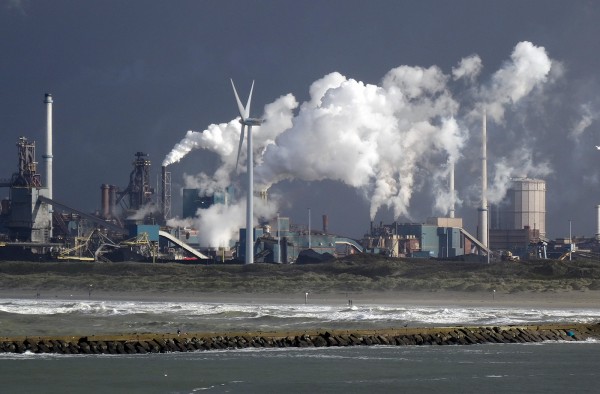 The Paris Climate Change Conference (COP21) is under way. At the opening on November 30, 150 Heads of State gathered in Paris, most of whom addressed the conference. With representatives from 195 countries and observers from a range of organisations, the conference is set to last until 11 December. Optimism is relatively high that a legally binding and universal agreement will be reached, with the aim of keeping global warming below 2°C – what is generally regarded as a ‘safe’ limit.
The Paris Climate Change Conference (COP21) is under way. At the opening on November 30, 150 Heads of State gathered in Paris, most of whom addressed the conference. With representatives from 195 countries and observers from a range of organisations, the conference is set to last until 11 December. Optimism is relatively high that a legally binding and universal agreement will be reached, with the aim of keeping global warming below 2°C – what is generally regarded as a ‘safe’ limit.
But although it is hoped that a successor to the Kyoto Protocol of 1997 will be put in place, there are many problems in getting so many countries to agree. They may all wish to reduce global warming, but there is disagreement on how it should be achieved and how the burden should be shared between countries.
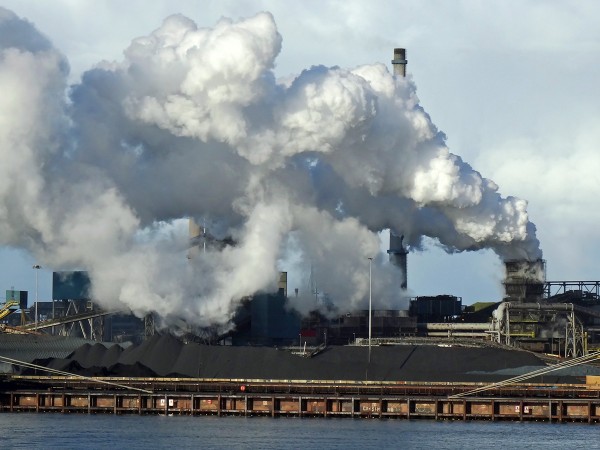 There are several difficult economic issues in the negotiations. The first is the size and impact of the external costs of emissions. When a country burns fossil fuels, the benefits are almost entirely confined to residents of that county. However, the environmental costs are largely external to that country and only a relatively small fraction is borne by that country and hardly at all by the polluters themselves, unless there is a carbon tax or other form or penalty in place. The problem is that the atmosphere is a common resource and without collective action – national or international – it will be overused.
There are several difficult economic issues in the negotiations. The first is the size and impact of the external costs of emissions. When a country burns fossil fuels, the benefits are almost entirely confined to residents of that county. However, the environmental costs are largely external to that country and only a relatively small fraction is borne by that country and hardly at all by the polluters themselves, unless there is a carbon tax or other form or penalty in place. The problem is that the atmosphere is a common resource and without collective action – national or international – it will be overused.
The second problem is one of distribution. Politicians may agree in principle that a solution is necessary which is equitable between nations, but there is considerable disagreement on what is meant by ‘equitable’ in this context. As the third Guardian article below puts it:
The most important hurdle could be over whether industrialised countries like the US, UK and Japan, which have contributed the most to the historical build-up of emissions, should be obliged to cut more than developing countries. India, on behalf of many poor countries, will argue that there must be “differentiation” between rich and poor; but the US wants targets that are applicable to all. A collision is inevitable.
A third problem is that of uncertainty. Although there is general agreement among scientists that human action is contributing to global warming, there is less agreement on the precise magnitude of the causal relationships. There is also uncertainty over the likely effects of specific emissions reductions. This uncertainty can then be used by governments which are unwilling to commit too much to emissions reductions.
 A fourth difficulty arises from the intertemporal distribution of costs and benefits of emissions reductions. The costs are born immediately action is taken. Carbon taxes or charges, or subsidies to renewables, or caps on emissions, all involve higher energy prices and/or higher taxes. The flows of benefits (or lower costs), however, of reduced emissions are not likely to be fully experienced for a very long time. But governments, whether democratic or dictatorships, tend to have a relatively short time horizon, governed by the electoral cycle or the likelihood of staying in power. True, governments may not be solely concerned with power and many politicians may have genuine desires to tackle climate change, but their political survival is still likely to be a major determinant of their actions.
A fourth difficulty arises from the intertemporal distribution of costs and benefits of emissions reductions. The costs are born immediately action is taken. Carbon taxes or charges, or subsidies to renewables, or caps on emissions, all involve higher energy prices and/or higher taxes. The flows of benefits (or lower costs), however, of reduced emissions are not likely to be fully experienced for a very long time. But governments, whether democratic or dictatorships, tend to have a relatively short time horizon, governed by the electoral cycle or the likelihood of staying in power. True, governments may not be solely concerned with power and many politicians may have genuine desires to tackle climate change, but their political survival is still likely to be a major determinant of their actions.
Of course, if there is strong public opinion in favour of action to reduce emissions, governments are likely to respond to this. Indeed, all the expressions of public support for action ahead of the conference from all around the world, do give some hope for a strong agreement at the Paris conference. Nevertheless, there is still widespread scepticism in many countries over the relationship between human action and climate change, and many argue that the costs of policies to tackle climate change exceed the benefits.
Game theory can shed some insights into the difficulties ahead for the negotiators. The global optimum may be for a strong agreement, binding on all countries. The Nash equilibrium, however, may be a situation where countries push for their own interests at the expense of others, with the final agreement being much more minimalistic.
There do, however, seem to be more reasons to be cheerful at this summit that at previous ones. But negotiations are likely to be hard and protracted over the coming days.
Videos and webcasts
 Paris Climate Conference: The Big Picture Wall Street Journal on YouTube, Jason Bellini (30/11/15)
Paris Climate Conference: The Big Picture Wall Street Journal on YouTube, Jason Bellini (30/11/15)
 Why is the Paris UN climate summit important? PwC, Leo Johnson (14/10/15)
Why is the Paris UN climate summit important? PwC, Leo Johnson (14/10/15)
 Paris climate change summit 2015: ‘the near impossible task’ Channel 4 News on YouTube, Tom Clarke (30/11/15)
Paris climate change summit 2015: ‘the near impossible task’ Channel 4 News on YouTube, Tom Clarke (30/11/15)
 COP21: Rallies mark start of Paris climate summit BBC News, David Shukman (29/11/15)
COP21: Rallies mark start of Paris climate summit BBC News, David Shukman (29/11/15)
 With climate at ‘breaking point’, leaders urge breakthrough in Paris Reuters, Bruce Wallace and Alister Doyle (1/12/15)
With climate at ‘breaking point’, leaders urge breakthrough in Paris Reuters, Bruce Wallace and Alister Doyle (1/12/15)
 COP21: Paris conference could be climate turning point, says Obama BBC News (30/11/15)
COP21: Paris conference could be climate turning point, says Obama BBC News (30/11/15)
 Leaders meet to reach new agreement on climate change BBC News, David Shukman (30/11/15)
Leaders meet to reach new agreement on climate change BBC News, David Shukman (30/11/15)
Poll: Growing Doubts Over Climate Change Causes Sky News, Thomas Moore (30/11/15)
 Paris climate protesters banned but 10,000 shoes remain The Guardian (29/11/15)
Paris climate protesters banned but 10,000 shoes remain The Guardian (29/11/15)
Articles
COP-21 climate deal in Paris spells end of the fossil era The Telegraph, Ambrose Evans-Pritchard (29/11/15)
Is there an economic case for tackling climate change? BBC News, Andrew Walker (28/11/15)
World Leaders in Paris Vow to Overcome Divisions on Climate Change Wall Street Journal, William Horobin and William Mauldin (30/11/15)
Experts discuss how to build a carbon-free energy industry The Guardian, Tim Smedley (25/11/15)
Africa could lead world on green energy, says IEA head The Guardian, Anna Leach (11/11/15)
Climate change talks: five reasons to be cheerful or fearful The Guardian, John Vidal (30/11/15)
The Paris climate change summit, explained in 4 charts The Washington Post, Philip Bump (30/11/15)
Why This Goal To Curb Climate Change ‘Is Not Ideal’ Huffington Post, Jacqueline Howard (30/11/15)
Paris climate change talks: What the different groups attending expect from these crucial meetings Independent, Tom Bawden (29/11/15)
UN Climate Change Conference: World Leaders Call For Price On CO2 Emissions Despite Uphill Battle At Paris Summit International Business Times, Maria Gallucci (30/11/15)
World Bank, six nations call for a price on carbon SBS (Australia) (1/12/15)
Uruguay makes dramatic shift to nearly 95% electricity from clean energy The Guardian, Jonathan Watts (3/12/15)
Questions
- Why is COP21 considered to be so significant?
- For what reasons is there hope for a binding agreement to limit global warming to 2°C?
- What would be the effect on global warming of the commitments made by more than 180 countries prior to the conference?
- What market failings contribute towards the problem of global warming?
- Why, if all countries want to achieve a binding agreement at the Paris conference, is it likely to be so difficult to achieve?
- Explain what is meant by a ‘Nash equilibrium’ and how the concept is relevant to international negotiations.
- Why is China investing heavily in solar power?
- Could Africa lead the world in green energy?
- Is a ‘cap and trade’ (tradable permits) system (a) an effective means of reducing emissions; (b) an efficient system?
- What is the best way of financing investment in renewable energy?
- How does the structure/order of the Paris conference differ from previous COPs? Is such a structure more likely to achieve substantial results?
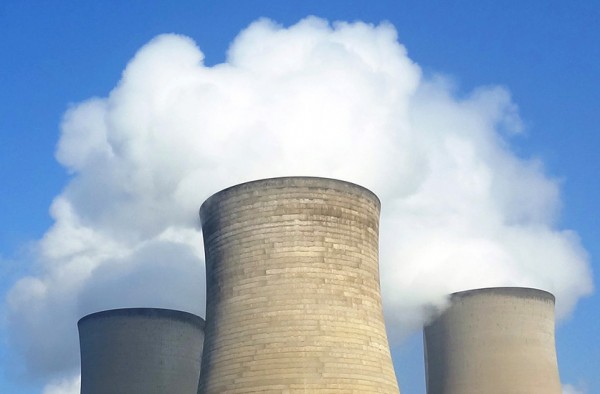 Is slower economic growth a cost of cutting greenhouse gas emissions? Apparently not – at least according to two studies: one by DIW Econ, a German institute for economic research, and the other, earlier this year, by the International Energy Association (see reports below).
Is slower economic growth a cost of cutting greenhouse gas emissions? Apparently not – at least according to two studies: one by DIW Econ, a German institute for economic research, and the other, earlier this year, by the International Energy Association (see reports below).
The IEA study found that, despite global GDP having grown by 6.4% in 2014, global emissions remained flat. The DIW Econ study found that from 2004 to 2014, OECD countries as a whole grew by 16% while cutting fossil fuel consumption by 6% and greenhouse gas emissions by 6.4%.
But what does this mean? If growth accelerated, what would happen to greenhouse gas emissions? Would they begin to rise again? Probably.
The point is that various developments, largely independent of economic growth have been reducing the greenhouse gas emissions/GDP ratio. These developments include: technological advances in energy generation; the switch to alternative fuels in many countries, thanks, in large part to lower renewable energy costs; increased energy efficiency by consumers; and a continuing move from energy-intensive manufacturing to less energy-intensive services.
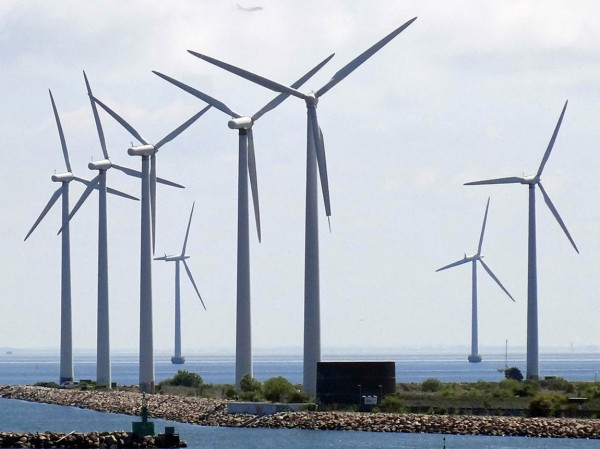 So if governments forced more radical cuts in greenhouse gases, would this reduce the rate of economic growth or have no effect? For a given level of technological advancement, the initial effect would probably be a reduction in economic growth. But to the extent that this encouraged further investment in renewables and energy saving, it might even stimulate economic growth over the longer term, especially if it helped to bring lower energy prices.
So if governments forced more radical cuts in greenhouse gases, would this reduce the rate of economic growth or have no effect? For a given level of technological advancement, the initial effect would probably be a reduction in economic growth. But to the extent that this encouraged further investment in renewables and energy saving, it might even stimulate economic growth over the longer term, especially if it helped to bring lower energy prices.
A big problem in decoupling economic growth from fossil fuel usage is that developing countries, which are taking a growing share of world manufacturing, are more heavily dependent on coal than most developed countries. But even here there seems to be some hope. China, the biggest manufacturer in the developing world, is rapidly increasing its use of renewables. As the IEA press release states:
In China, 2014 saw greater generation of electricity from renewable sources, such as hydropower, solar and wind, and less burning of coal.
If the world is to tackle global warming by making significant cuts in greenhouse gases, there must be a way for developing countries to continue growing while making less use of fossil fuels.
Article
Cutting greenhouse gas emissions won’t slow global economic growth — report The Guardian, Bruce Watson (26/9/15)
Reports
Turning point: Decoupling Greenhouse Gas Emissions from Economic Growth DIW Econ, Lars Handrich, Claudia Kemfert, Anselm Mattes, Ferdinand Pavel, Thure Traber (September 2015)
World Energy Outlook Special Report 2015: Energy and Climate Change International Energy Agency (June 2015)
Questions
- What are the possible causal relationships between cutting greenhouse gas emissions and the rate of economic growth?
- What incentive mechanisms can governments or other agencies adopt to encourage reductions in greenhouse gas emissions without reducing economic growth?
- Can a cap and trade system, such as the European Emissions Trading Scheme help to achieve a given level of emissions reduction at minimum cost to economic growth? Explain.
- How might the developed world support developing countries in moving to a low carbon technology?
- What factors lie behind the falling costs of renewable energy? Are these the same factors that lie behind the falling cost of oil?
- What political problems might hinder the greater production of renewable energy?
- How might an economist set about determining a socially optimal amount of fossil fuel production? What conceptual and philosophical problems might there be in agreeing what is meant by a social optimum?
 The EU has recently signed two trade deals after many years of negotiations. The first is with Mercosur, the South American trading and economic co-operation organisation, currently consisting of Brazil, Argentina, Uruguay and Paraguay – a region of over 260m people. The second is with Vietnam, which should result in tariff reductions of 99% of traded goods. This is the first deal of its kind with a developing country in Asia. These deals follow a recent landmark deal with Japan.
The EU has recently signed two trade deals after many years of negotiations. The first is with Mercosur, the South American trading and economic co-operation organisation, currently consisting of Brazil, Argentina, Uruguay and Paraguay – a region of over 260m people. The second is with Vietnam, which should result in tariff reductions of 99% of traded goods. This is the first deal of its kind with a developing country in Asia. These deals follow a recent landmark deal with Japan. But although there is a net economic gain from greater trade, some sectors will lose as consumers switch to cheaper imports. Thus the agricultural sector in many parts of the EU is worried about cheaper food imports from South America. What is more, increased trade could have detrimental environmental impacts. For example, greater imports of beef from Brazil into the EU could result in more Amazonian forest being cut down to graze cattle.
But although there is a net economic gain from greater trade, some sectors will lose as consumers switch to cheaper imports. Thus the agricultural sector in many parts of the EU is worried about cheaper food imports from South America. What is more, increased trade could have detrimental environmental impacts. For example, greater imports of beef from Brazil into the EU could result in more Amazonian forest being cut down to graze cattle. In 2015, at the
In 2015, at the  But no details have been agreed on the system of carbon trading, thanks to objections from the Brazilian delegates, who felt that insufficient account would be made of their country’s existing promises on not chopping down parts of the Amazon rainforest.
But no details have been agreed on the system of carbon trading, thanks to objections from the Brazilian delegates, who felt that insufficient account would be made of their country’s existing promises on not chopping down parts of the Amazon rainforest. 







